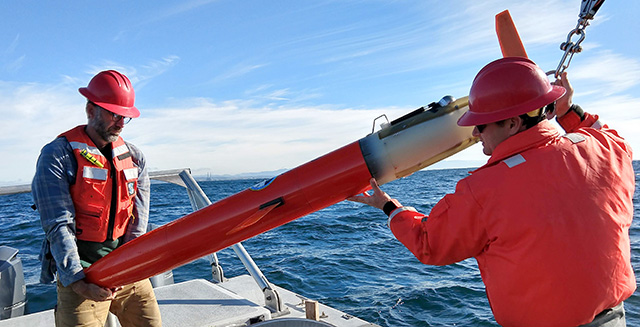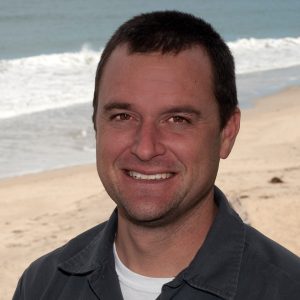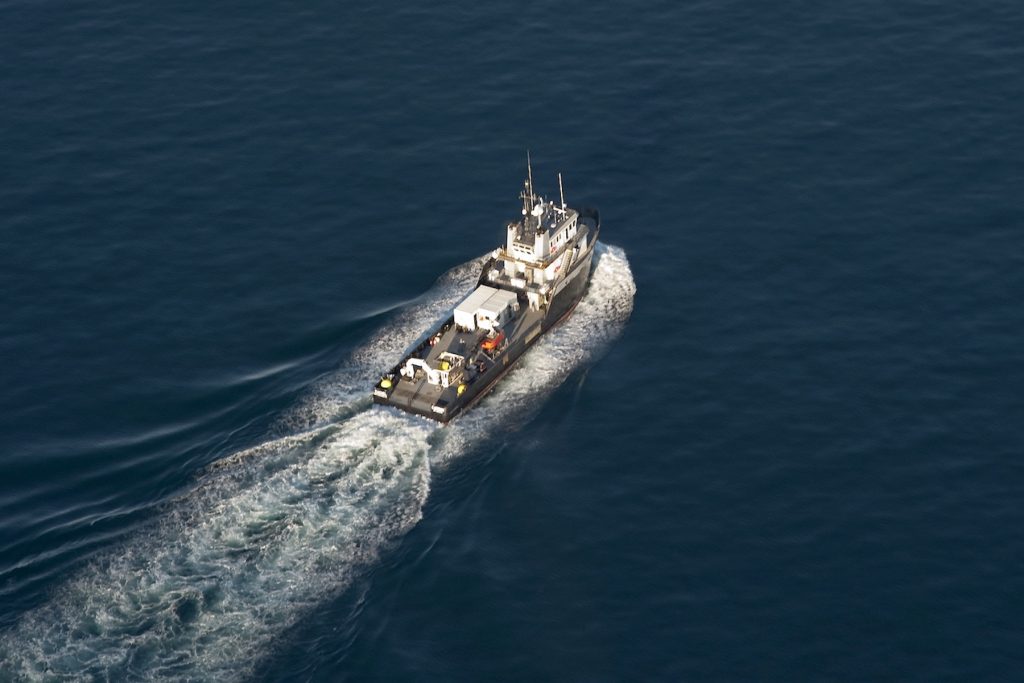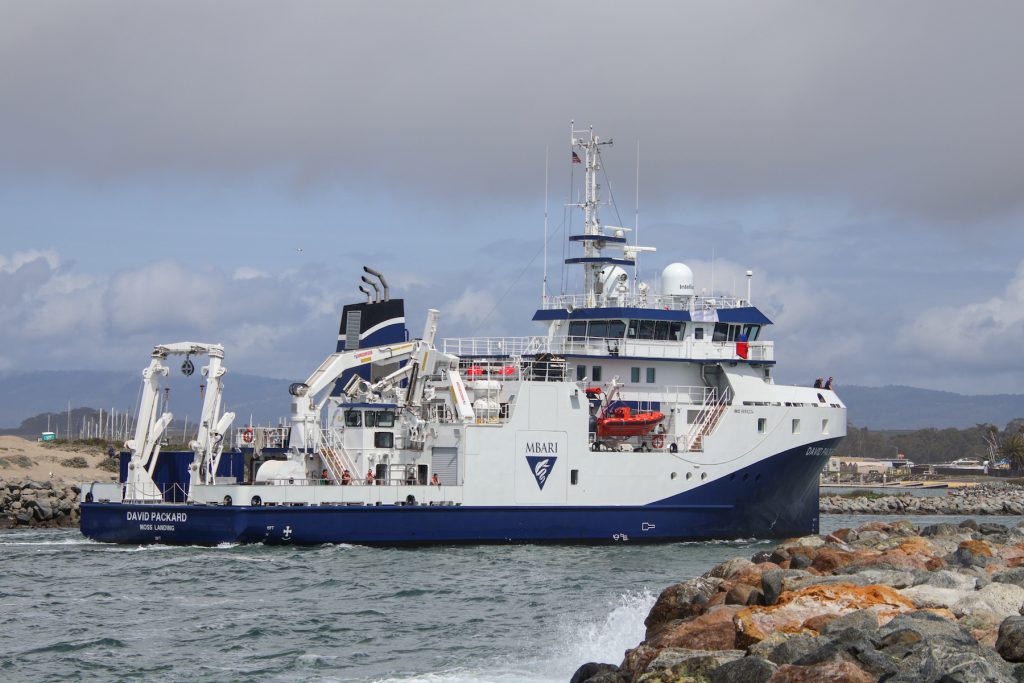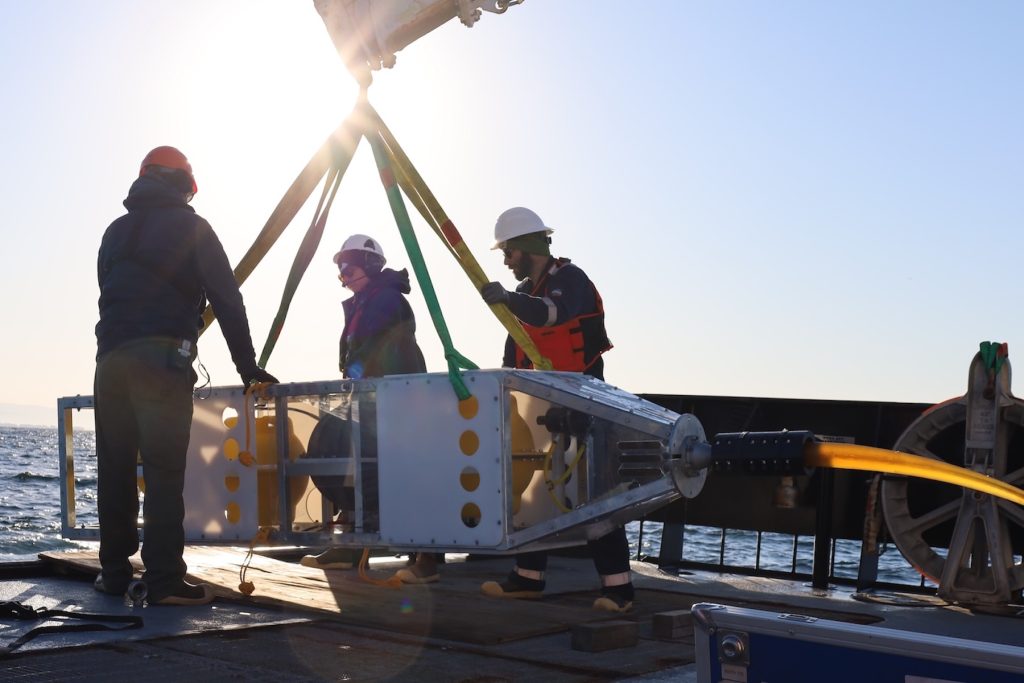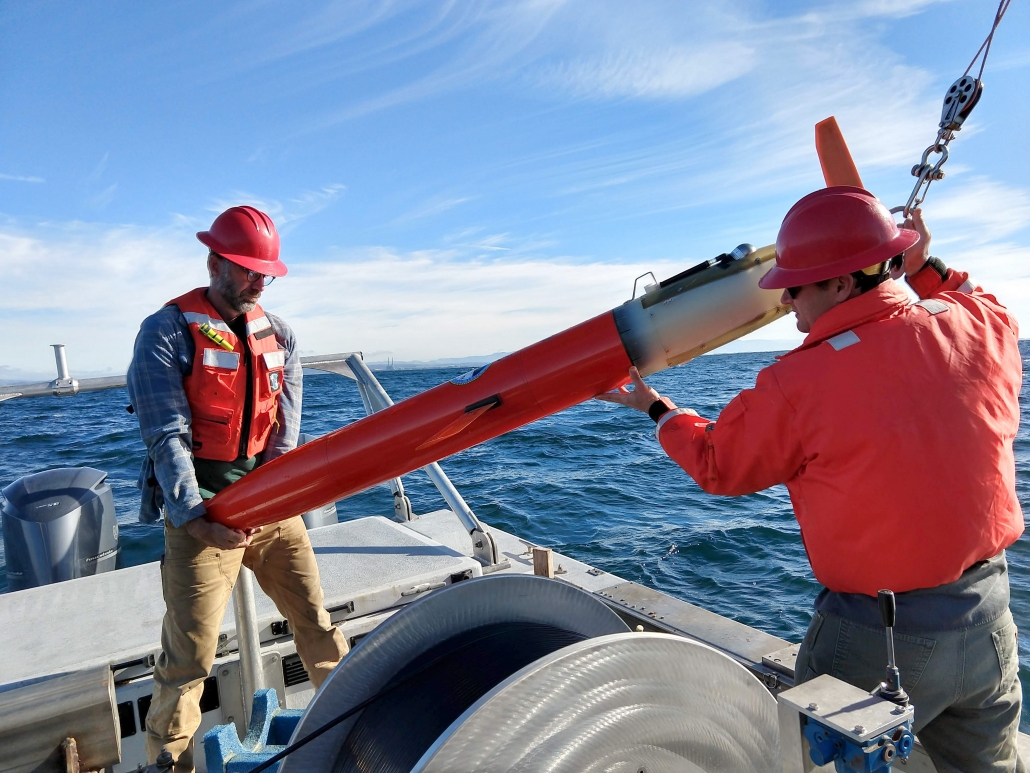
Over the last 20 years, marine scientists have become increasingly concerned about changes in the acidity or pH of the ocean. About one-third of the carbon dioxide that humans have released into the atmosphere has been taken up by the ocean, causing seawater to become more acidic (lower pH). Ocean acidification has many effects on marine life, especially animals such as corals and shellfish, whose hard skeletons can dissolve if the surrounding seawater becomes too acidic.
MBARI researchers have been at the forefront of research on ocean acidification for decades, with Peter Brewer being one of the first scientists to study the problem in detail, and Ken Johnson developing some of the first pH sensors that work reliably in the deep sea. Marine chemist Yui Takeshita has continued this tradition, developing pH sensors that can work in a wide variety of dynamic environments, including coastal waters, coral reefs, and kelp beds.
Over the last several years, Takeshita has worked with researchers at the Scripps Institution of Oceanography to show that electronic pH sensors mounted on underwater robots called gliders can measure pH with an accuracy approaching that of standard chemical methods used on board research ships. By demonstrating that gliders can consistently and accurately measure pH over large areas of the ocean, Takeshita’s work could eventually lead to the deployment of a fleet of gliders to monitor ocean acidification off the U.S. west coast and beyond.
Monitoring the ocean’s pH is particularly important along the California and Oregon coasts, where relatively acidic water is often brought toward the surface by strong winds blowing from the northwest—a process known as upwelling. This upwelled water is rich in nutrients and supports the region’s abundant marine life. But it can have negative effects as well. In fact, acidic water from strong upwelling has had economic impacts on oyster hatcheries, causing young oysters to grow very slowly or even die.
Many west-coast oyster farms now monitor the pH of their local seawater. But they can’t always tell when acidic water is likely to arrive from offshore. Thus, for oyster farmers, monitoring the pH of the coastal ocean has become a life or death issue. As Takeshita explained, “pH sensors on gliders could provide data in real time showing where these low pH waters are, potentially providing a warning system for when pH in hatcheries might drop to dangerous levels.”
Adapting pH sensors to underwater gliders
One of the major challenges in measuring ocean pH is that ocean chemistry, especially near the coast, varies dramatically over space and time. So you can’t just place one pH sensor on a wharf and understand what’s happening all along the coast. That’s where underwater gliders come in handy.
Gliders are underwater robots that move through the water without a motor. They contain small oil bladders that automatically cause them to sink down or rise toward the surface. As they do so, small wings allow them to “glide” forward through the water. In this way, they can travel hundreds of kilometers beneath the surface without using much power.
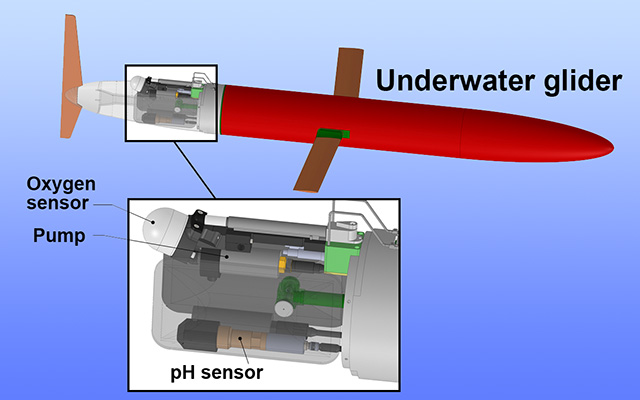
Because they can stay out at sea for months at a time and be directed from shore, gliders are one of the best tools for collecting data about the ever-changing coastal ocean. They typically carry instruments that measure the temperature and salinity of seawater. But so far, only a few gliders have carried pH sensors.
Installing pH sensors on gliders has been difficult because the existing instruments used too much power and were too large to fit in the cramped instrument bay on most gliders. Takeshita’s experiment was the first to demonstrate that pH sensors could collect reliable data on a glider for long periods of time.
The tests turned out so well that Takeshita is hoping similar sensors will be installed on gliders that have been routinely patrolling the coast offshore of California and Oregon since 2008. These gliders already measure temperature, salinity, chlorophyll, and oxygen concentrations. So pH sensors are the next logical addition.
Addressing the technical challenges of measuring ocean pH
Although it seems simple in concept, measuring the pH of the ocean is tricky for a variety of reasons. First of all, the ocean’s pH varies by only small amounts, from about pH 7 to pH 8.5 (neutral to slightly basic). So any instrument used to measure pH has to be very sensitive. The instrument also needs to be stable, so it can make consistent measurements over time and over multiple deployments.
Historically, the most sensitive pH measurements have involved chemical procedures that can only be conducted in a laboratory. However, a little over 10 years ago, Johnson and his collaborators proved that commercial electronic pH instruments could be modified for use at sea.
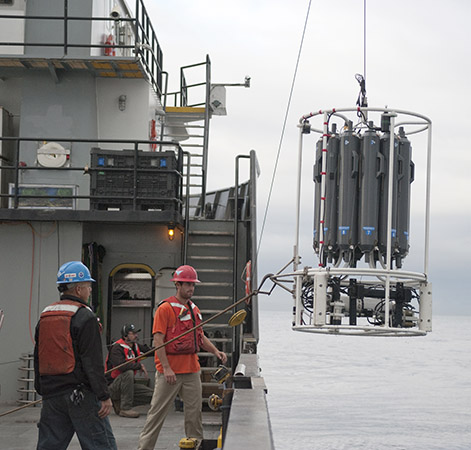
For his research, Takeshita has adapted these electronic pH sensors so they can accurately and consistently record data in the dynamic coastal environment—on remote coral reefs, in kelp beds, and attached to underwater robots.
One key to Takeshita’s effort was improving the electronics that control the pH sensors, so that they took up less space and used less electrical power. He also refined techniques for calibrating the instruments before they went in the water and for confirming their accuracy while deployed at sea.
During field trials, the glider’s pH sensors did not change their sensitivity during six deployments over a nine-month period. For the one deployment where the sensor did show “drift,” the researchers were able to calibrate the sensor by sending the glider down into deeper water, where pH levels were relatively stable and predictable.
Next steps
Having demonstrated that pH sensors can work reliably on gliders, Takeshita hopes that the sensors will be used in routine ocean monitoring. “We would like to see these sensors on the entire glider fleet off California, to look at upwelling and ocean acidification. The gliders could feed data into computer models so we can predict periods when more acidic water is likely to reach the coast.”
He added, “One of our goals in this experiment was to make a modular design for a pH sensor that could be used not just on gliders, but on other ocean-going robots such as Saildrones and Wave Gliders, as well as other platforms. I wanted to create an instrument that could easily feed data into observational networks. But each platform has its own challenges, so you have to deal with those on an individual basis. ”
“Working with gliders has been super fun,” said Takeshita. “You can get hourly profile data in one location for several weeks, or you can get large spatial scale transects covering hundreds of kilometers of ocean. So you can look at a variety of processes. Plus, you can tell the gliders where to go, so you have a lot of flexibility and freedom in what you can do. The sky’s the limit, or I guess in this case, the ocean floor is the limit.”
Article by Kim Fulton-Bennett
Original journal article:
Takeshita, Y., B.D. Jones, K.S. Johnson, F.P. Chavez, D.L. Rudnick, M. Blum, K. Conner, S. Jensen, J.S. Long, T. Maughan, K.L. Mertz, J.T. Sherman, J.K. Warren, Accurate pH and O2 Measurements from Spray Underwater Gliders, Journal of Atmospheric and Oceanic Technology, https://doi.org/10.1175/JTECH-D-20-0095.1
For additional information or images relating to this article, please send an email to pressroom@mbari.org.
